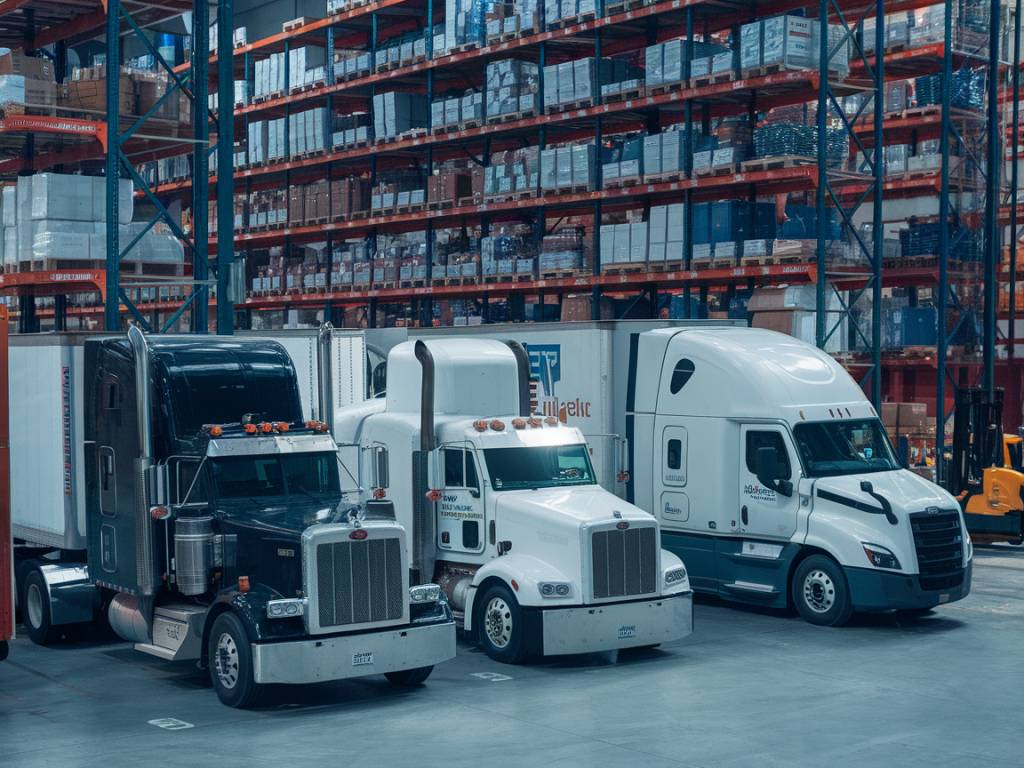In recent years, the logistics and transport industry has seen a profound transformation thanks to advancements in technology. One such technological marvel is big data, which has played a pivotal role in optimizing operations and boosting efficiency. As companies strive to keep up with growing consumer demand and increasing competition, the use of big data in logistics and transport has become indispensable. In this article, we will delve into the various aspects of how big data is revolutionizing this vital industry.
Understanding Big Data in Logistics and Transport
Big data refers to the vast volume of structured and unstructured data that is generated from various sources, including transactional records, sensors, GPS devices, social media, and more. In the context of logistics and transport, this data can provide valuable insights into various aspects of the supply chain, from inventory management to delivery routes.
Data collected from these sources can be analyzed to uncover patterns, trends, and correlations that can help businesses make more informed decisions. By leveraging big data analytics, companies can optimize their operations, reduce costs, and improve overall efficiency.
Key Benefits of Big Data in Logistics and Transport
The application of big data in logistics and transport offers several significant benefits:
- Enhanced Route Optimization: With the help of real-time traffic data and historical patterns, companies can determine the most efficient routes for their fleet. This not only saves time but also reduces fuel consumption and costs.
- Improved Inventory Management: Big data enables businesses to maintain an optimal inventory level by predicting demand more accurately. It helps in avoiding both stockouts and overstocking, thereby saving storage costs and enhancing customer satisfaction.
- Predictive Maintenance: By analyzing data from IoT sensors attached to vehicles and machinery, companies can predict potential failures and carry out maintenance proactively. This minimizes downtime and extends the lifespan of assets.
- Enhanced Customer Experience: Through data analytics, companies can gain insights into customer preferences and behaviors, allowing them to offer personalized services and improve the overall customer experience.
- Cost Reduction: By identifying inefficiencies and optimizing processes, big data analytics can significantly reduce operational costs, leading to higher profitability.
Applications of Big Data in Logistics and Transport
The role of big data in logistics and transport is multifaceted, with numerous applications that are making a tangible difference in the industry.
Real-Time Tracking and Visibility
One of the most significant advantages of big data is its ability to provide real-time tracking and visibility. By utilizing GPS and RFID technology, companies can monitor the location and condition of their shipments throughout the supply chain. This visibility allows for better coordination and planning, ensuring timely deliveries and reducing the risk of lost or damaged goods.
Demand Forecasting
Accurate demand forecasting is crucial for efficient logistics and transport operations. Big data analytics can process vast amounts of historical sales data, market trends, and external factors like economic indicators and weather conditions to predict future demand. This helps companies plan their production schedules, manage inventory levels, and allocate resources more effectively.
Minimizing Delays and Disruptions
Transport and logistics operations are often susceptible to delays and disruptions due to various factors such as traffic congestion, adverse weather conditions, and unforeseen events. Big data analytics can help companies identify potential disruptions in advance and take proactive measures to mitigate their impact. For instance, predictive analytics can forecast weather-related disruptions, allowing companies to adjust their routes and schedules accordingly.
Operational Efficiency
By analyzing data from different segments of the logistics and transport chain, companies can identify bottlenecks and inefficiencies. For example, data from warehouse management systems can reveal areas where processing times can be reduced or workflows can be streamlined. These insights enable companies to optimize their operations, enhancing overall efficiency.
Enhanced Vendor Management
Big data analytics assists in monitoring vendor performance by tracking key metrics such as delivery times, order accuracy, and service quality. This information enables companies to make more informed decisions when selecting and managing vendors, ensuring that they work with reliable partners who contribute to the efficiency of the supply chain.
Barriers to Adoption of Big Data in Logistics and Transport
Despite the numerous advantages, the adoption of big data in logistics and transport is not without challenges. Some of the primary barriers include:
- Data Quality: The accuracy and reliability of data are crucial for effective analytics. Poor quality data can lead to incorrect insights and decision-making, undermining the benefits of big data analytics.
- Data Integration: Integrating data from various sources and systems can be complex and time-consuming. Companies must ensure that their data is harmonized and consistently structured for meaningful analysis.
- Cost of Implementation: The initial investment in big data infrastructure and tools can be substantial. Additionally, ongoing maintenance and upgrades can add to the costs, which may deter smaller companies from adopting big data solutions.
- Skilled Workforce: There is a growing demand for data scientists and analysts who can extract meaningful insights from big data. A shortage of skilled professionals can hinder the widespread adoption of big data in the industry.
- Data Privacy and Security: As the volume of data grows, so do concerns about data privacy and security. Companies need to implement robust measures to protect sensitive information and comply with regulations.
Future Trends in Big Data and Logistics
As technology continues to evolve, new trends are emerging that will further enhance the role of big data in logistics and transport. Some of these trends include:
- Artificial Intelligence and Machine Learning: Integrating AI and machine learning with big data analytics can enable more sophisticated and accurate predictions, automation of tasks, and real-time decision-making.
- Internet of Things (IoT): The proliferation of IoT devices, such as connected sensors and smart tags, will generate even more data, providing deeper insights into various logistics and transport processes.
- Blockchain Technology: Blockchain can enhance transparency and security in the supply chain by providing a decentralized and tamper-proof ledger of transactions. This can improve trust and traceability across the entire logistics network.
- Advanced Analytics Tools: The development of more advanced and user-friendly analytics tools will make it easier for companies to harness the power of big data. These tools will enable more stakeholders within the organization to access and utilize data-driven insights.
- Collaboration and Data Sharing: As companies recognize the value of data collaboration, more partnerships and data-sharing agreements will emerge. This collective approach will lead to richer datasets and more comprehensive insights.
Conclusion
Big data is undoubtedly transforming the logistics and transport industry by providing actionable insights that drive efficiency and innovation. Companies that embrace big data analytics are better positioned to navigate the complexities of the modern supply chain, optimize their operations, and deliver superior customer experiences. As technology continues to advance, the opportunities for big data in logistics and transport will only grow, making it an essential tool for success in the industry.



